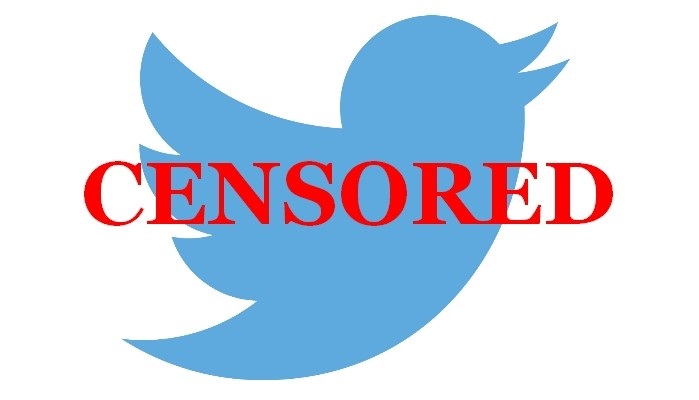“Offensive.” “Inappropriate.” Even “fake news.”
Increasingly, media outlets and pro-choice politicians are labeling pro-life groups with these derogatory terms and openly calling on social media outlets to censor pro-life voices, especially those with increasingly large online followings. They cite how “dangerous” it is that our message is reaching millions of people each day.
This past summer, for example, the Washington Examiner reported that social media giant Twitter prevented Live Action from advertising to build our audience while allowing abortion groups like Planned Parenthood and others free rein to reach out to virtually anyone.
Twitter defended its actions, calling our content “inflammatory.” But what did it deem so offensive? A picture of a child developing in the womb and ultrasound images like the ones expectant parents hang on refrigerators.
Twitter says it’s acceptable for Planned Parenthood to tweet that taxpayers who don’t want to fund the abortion chain are “extremists,” but when Live Action tweets that Planned Parenthood shouldn’t receive taxpayer funding, Twitter deems that “offensive.”
Twitter offered to reinstate Live Action’s ability to promote our messages if we deleted our content such as ultrasound images of children in the womb, our undercover investigations of the abortion industry, and anything calling for the end of government funding of Planned Parenthood.
In other words, we have to remove practically all of our pro-life content before Twitter says it will allow us to advertise again. For a supposedly “neutral platform,” Twitter seems to have picked sides in the abortion debate.
And the suppression doesn’t end there. One of The New York Times’ regular op-ed columnists recently noted Live Action’s substantial online following and called on Facebook to censor us after we ran a short video about the documentary film Hush, which investigated the link between abortion and breast cancer. While many in the media and the abortion industry dismiss any such link, the video examines (and heavily sources) the undeniable scientific evidence that pregnancies terminated before 32 weeks (for several reasons, including abortion) increase the likelihood of breast cancer. In the video, the filmmaker — who is actually a pro-choice woman — implores the media to stop denying the link so that women who have abortions will finally get the testing they need to detect cancers earlier.
In any public debate, people deserve access to the facts to make truly informed decisions. Those calling for the suppression of pro-life voices are often those who’ve repeated (and failed to fact-check) the talking points of the abortion industry. Social media platforms allow smaller issue-based news and information organizations like Live Action — organizations that don’t have multimillion-dollar publishing houses or TV networks — to provide another perspective by injecting facts and analysis into the abortion debate that pro-abortion advocates may hide or ignore.
Keep up with the latest pro-life news and information on Twitter. Follow @LifeNewsHQ
For instance, in recent debates in Congress over the public funding for Planned Parenthood, many pro-choice politicians and media outlets touted Planned Parenthood as a women’s health organization with abortion comprising only three percent of its business. It wasn’t surprising then that people were shocked when they heard Live Action refer to Planned Parenthood as the biggest abortion chain in America — one that commits over 320,000 abortions every year, or roughly one-third of all abortions in the U.S.
But was this claim fake news or mere clickbait? Hardly. The fact is, that abortion number comes directly from Planned Parenthood’s own annual reports. And the three percent number is a myth, even according to mainstream media outlets that have done the math. It’s a number that Planned Parenthood can only calculate when it counts abortion as a service equal to a $10 pregnancy test or a box of condoms it hands out
Additionally, over the last 10 years of Planned Parenthood’s annual reporting (from 2006-07 to 2015-16), the amount it provides in actual health services like prenatal services, breast exams, and PAP tests are all down, whereas the number of abortions the organization performs is up 24 percent.
This kind of information is critical to the public debate, as taxpayers are footing the bill for nearly half of Planned Parenthood’s budget — over $550 million a year. Yet the pro-life and conservative media — using social media to get the facts out — are some of the only places where the public can find it.
Granted, these and other facts are not convenient for the abortion industry, for politicians who receive its large campaign contributions, or for those in the media or social media worlds who willingly promote its agenda.
But when they call for silencing other voices, the truth suffers, the public discourse suffers, and in some cases — as with the abortion-breast cancer link — people’s very lives can be at stake. Certainly in the public debate to end or allow abortion in America, the lives of the nearly 3,000 preborn children killed each day by abortion are at stake.
The push for censorship should cause concern for everyone, even beyond those of us involved in this fight. If we allow censorship because we don’t like a particular viewpoint, the obvious question is: whose viewpoint will be silenced next?
One of the intended benefits of the Internet Age was to democratize information for all, not to create a new kind of tyranny with it and a new class of gatekeepers who silence the truth.
LifeNews Note: Lila Rose is the president and founder of Live Action. This originally appeared at the Washington Examiner.








